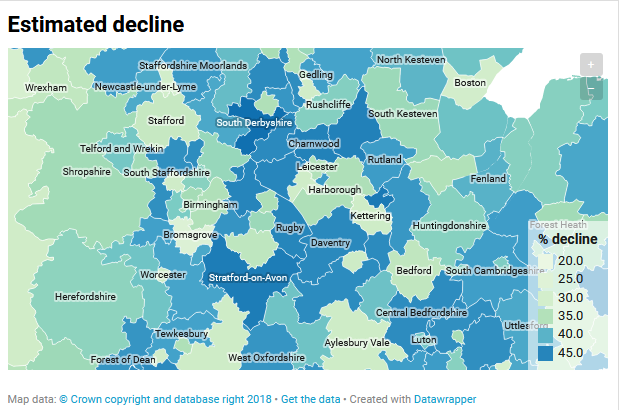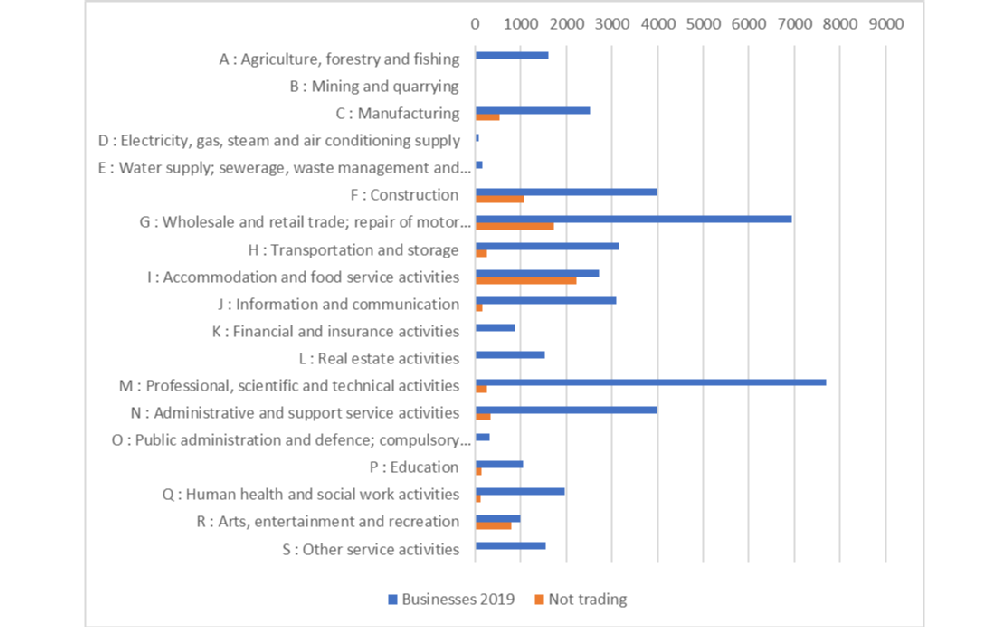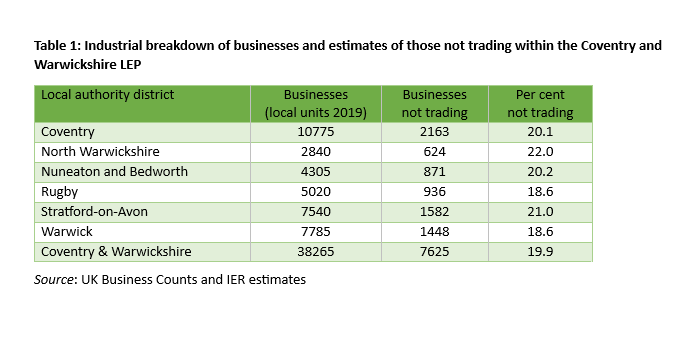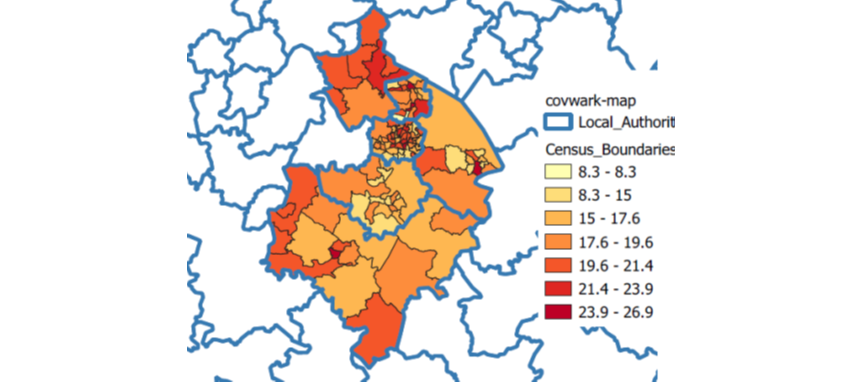IER News & blogs
What are the implications of COVID-19 for Coventry and Warwickshire? Dr David Owen
 The UK, like most other countries, introduced a “lockdown” in late March in order to reduce contact between people thereby reducing infections and “taking pressure off” the National Health Service. This involved preventing most businesses involving social contact to stop operating and for workers to work from home wherever possible. The implication was a huge cut in economic activity. The National Institute for Economic and Social Research made estimates of considerable economic recession. The Bank of England’s view (on May 7th) of the probable impact of the lockdown is that the UK economy will shrink by 14% in 2020 but rebound quickly, with growth of 15% in 2021.
The UK, like most other countries, introduced a “lockdown” in late March in order to reduce contact between people thereby reducing infections and “taking pressure off” the National Health Service. This involved preventing most businesses involving social contact to stop operating and for workers to work from home wherever possible. The implication was a huge cut in economic activity. The National Institute for Economic and Social Research made estimates of considerable economic recession. The Bank of England’s view (on May 7th) of the probable impact of the lockdown is that the UK economy will shrink by 14% in 2020 but rebound quickly, with growth of 15% in 2021.
This blog presents tentative estimates of the possible impact of the lockdown on employment and enterprises within the Coventry and Warwickshire local enterprise partnership (LEP) area and for small areas within Coventry and Warwickshire.
The Centre for Progressive Policy (CPP) estimated the impact of the lockdown at the local authority scale, drawing upon estimates from the Office for Budget Responsibility (OBR). They estimate the decline in economic output to be nearly 50% in parts of the Midlands and the North West in the second quarter of this year. Their estimates of percentage decline in output (GVA) for the neighbouring area are presented in the Figure 1. Loss of output is largest in Stratford-on-Avon (46.2%), North Warwickshire and Rugby (both 45%), and lower in Coventry (36.7%), Nuneaton (35.6%) and Warwick (34.1%).
Figure 1: CPP estimates of GVA decline by local authority district

Source: Centre for Progressive Policy
Using the results from Wave 3 of the Office for National Statistics (ONS) Business Impact of Coronavirus (COVID-19) for the period 6 April to 19 April 2020 crude estimates of the possible impact of the lockdown for the LEP area as a whole and for areas within it are provided . This survey revealed that 23% of the businesses which responded had temporarily closed or paused trading, while 23.4% had experienced a loss of turnover of over 50% with a further 20.4% experiencing a loss of turnover of between 20% and 50%. These percentages are reported for the SIC 2007 industry sections in which the response rate was high enough to report.
Here, these estimates are applied to UK Business Counts for the LEP area and the constituent local authority districts and Middle Layer Super Output Areas within it to present tentative estimates of the impact of the lockdown and its geographical variation. Figure 2 presents the distribution of businesses (local units) by industry section in 2019 and the estimated number not trading within the LEP. The estimated numbers not trading are highest for accommodation and food service activities and wholesale and retail trade. The impact of closures is greatest upon arts, entertainment and recreation.
Figure 2: Industrial breakdown of businesses in 2019 and estimated number of businesses not trading

Source: UK Business Counts and IER estimates
Applying the proportion of businesses not trading to the count of businesses in each section yields the results presented in Table 1 for the Coventry and Warwickshire LEP and the six local authorities within it: The estimated percentage of businesses not trading is highest in North Warwickshire and lowest in Rugby and Warwick.

Figure 3 presents the geographical distribution of businesses not trading as a percentage of businesses present in 2019 (for those industries for which ONS reports this percentage). There are marked spatial variations, with higher percentages in the centre and north-east of Coventry, central Rugby, the centre of Stratford-upon-Avon, and Nuneaton. There are also high percentages in more peripheral locations, e.g. southern Stratford-on-Avon district. These are probably areas in which manufacturing plants are located. In contrast, the towns of Warwick district display lower percentages of businesses not trading.
Figure 3: Estimated percentage of businesses not trading within the Coventry and Warwickshire LEP area

Source: UK Business Counts and IER estimates
Please bear in mind that the estimates presented here are based on a very simple methodology and do not incorporate any factors specific to the local economy. Like the CPP estimates, they provide indicators of the potential geographical pattern of vulnerability to recession, deriving from the industrial structure of localities.
